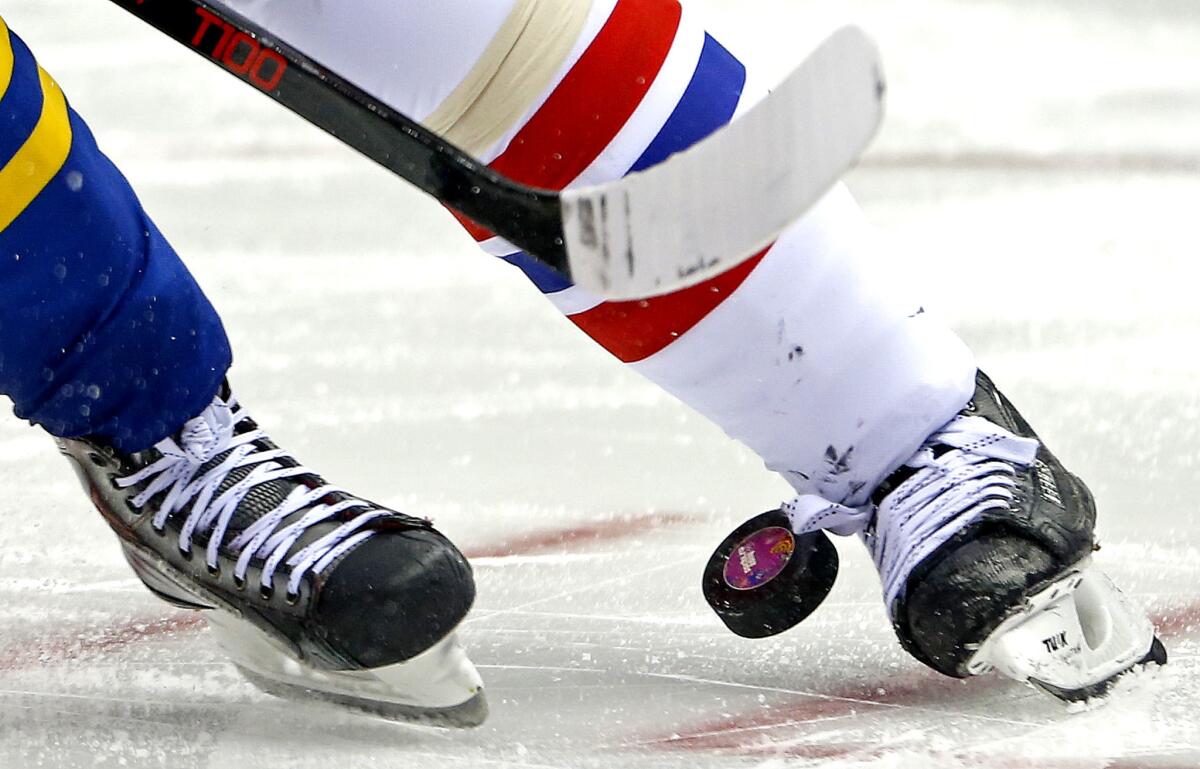Coronavirus trounces both teams in ill-fated hockey game

They ranged in age from 19 to 53, weekend warriors who likely grew up playing hockey on ponds, in youth leagues and on high school teams. Even as adults, they couldn’t leave the ice behind. Yet despite their combined athleticism and skill, they were no match for the coronavirus.
Their fateful match-up occurred on June 16 in Tampa, Fla. For 60 minutes, the 22 men took turns grunting, sweating, spitting and checking their way up and down the ice in a bid to reach a hard rubber puck and control its trajectory with a stick.
Five days later, 14 of 22 players had developed symptoms of COVID-19. A fifteenth person, a staffer at the ice rink, also became ill. Thirteen of these 15 people went on to test positive for a coronavirus infection. The other two were not tested.
All of those sickened appear to have been infected by a single person who didn’t develop any outward symptoms of COVID-19 until the day after he had suited up for the evening game.
None of the remaining eight players exhibited symptoms of COVID-19, so none were tested for infection. But if they had been, the documented infection rate might have been even higher.
For hockey players eager for a chance to lace up their skates, hit the ice and escape the pandemic for a while, the implications are grim.
“The ice rink provides a venue that is likely well suited to COVID-19 transmission as an indoor environment where deep breathing occurs, and persons are in close proximity to one another,” three members of the Florida Department of Health wrote in a report published this week by the Centers for Disease Control and Prevention.
One of the authors, David Atrubin, identified himself as a hockey player in the Tampa area, ruling out antihockey bias as a likely motive for the finding.
The case highlights several characteristics of the SARS-CoV-2 coronavirus that have made it so difficult to control.
The first is the role of “silent spreaders.” The “index patient” — who developed a fever, cough, sore throat and headache the day after the game — by all accounts felt fine on the evening he showed up at the rink to play.
One of the biggest challenges in trying to contain the coronavirus is that an unknown number of people are spreading it when they don’t even seem sick themselves.
Researchers have found that people infected with the coronavirus appear to be contagious starting roughly 2½ days before their symptoms become evident. Indeed, one study published in the journal Nature found the peak of this ”viral shedding” to come roughly 18 hours before symptoms set in.
The index patient spread the virus to eight of his 10 teammates, five of 11 players on the opposing team, and the rink staffer. (Neither of the two referees became ill.) Once they were infected, it would take an average of four to five days (and as long as 14 days) for the next round of victims to become sick. In that time, each is likely to have spread the coronavirus “silently” to others. (The Florida health officials did not report on cases beyond those tied directly to the game.)
Meanwhile, some of the eight players who never became sick might themselves have harbored the virus and spread it to others under the radar. Since they were not tested, there’s no way to know.
The report also underscores a point on which scientists and public health officials have gone back and forth since early in the pandemic: That in the right conditions, the coronavirus appears to spread quite efficiently from one person to another through the air.
That’s especially true when individuals who are not wearing masks are standing close to — or, in the case of hockey, checking, bumping, shouldering and driving to the net in close contact with — other people.
None of the Tampa hockey players wore cloth face coverings during the game or when using their separate locker rooms. While playing, some used face-protecting metal cages or plastic half-shields. But those are better at guarding against a raised stick or a flying puck than coronavirus particles in the air.
Acknowledging that tiny particles that linger in the air can spread the coronavirus, the U.S. Centers for Disease Control and Prevention warned the public to avoid crowded, poorly ventilated rooms.
While so-called “aerosol transmission” has long been a suspected factor in spread, it was not until this month that the CDC acknowledged those particles might be playing a key role in the pandemic.
U.S. health officials have long warned that an infected person’s sneeze or cough might infect people at very close range. They also focused on the threat posed by droplets from those coughs and sneezes that land on doorknobs, handrails and other high-touch surfaces — a threat that can be countered with frequent hand-washing and sanitizer use.
But despite evidence from super-spreader events in meatpacking plants, choir practices and high-intensity fitness classes, they resisted the growing surmise that enough virus to make someone sick could be expelled in the breath of an infected person, and then linger long enough in the air to be sucked in by another person.
In that June hockey game, droplets both large and small likely conspired to create a super-spreader event.
Hockey is mostly played in indoor rinks that are cavernous and open. But in places like steamy Tampa, ventilation from outside would mean an unwelcome loss of the cool air that helps maintain the ice.

Amateur teams typically play three periods that last 15 to 20 minutes each, alternating ice time with jostling against teammates on a bench within a plexiglass enclosure. As they jump on and off the ice, players tend to spit and expel mucus. The exertion of skating and either disrupting or fending off opposing players causes heavy breathing. Scrums and pile-ups in corners, where the puck often ends up, are common.
All of that happens in a space measuring 200 feet by 85 feet, surrounded by plexiglass for the safety of spectators. And that’s before the spitting, shouting and shared surfaces players encounter in the locker room.
This game involved a limited number of players. Yet it appears to satisfy the criteria for a super-spreader event — a single assembly of people capable of activating a wide net of infections that can quickly become too large for local public health authorities to track and contain.
The account was published in Friday’s edition of the CDC’s Morbidity and Mortality Weekly Report.







